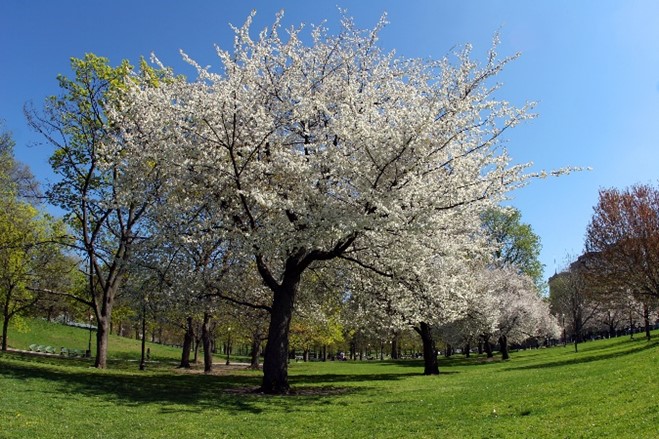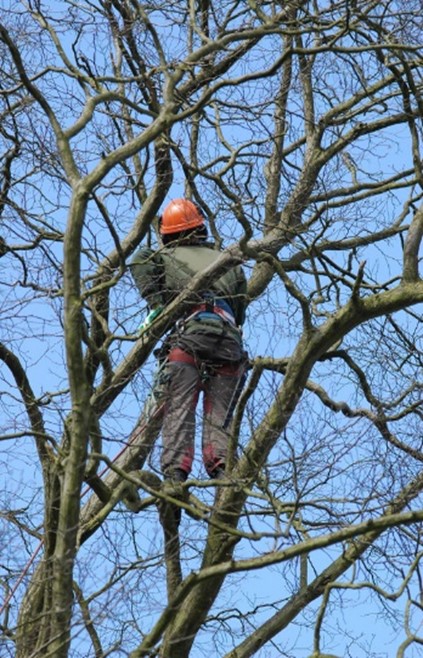It is still wintertime in St. Louis, but spring is right around the corner, and we are looking forward to some warmer weather, sunshine, colorful flowers, and tree foliage. But before spring arrives, there are some things that you should consider about your trees and shrubs, and what may have happened to them over these last few months.
Your trees and shrubs are still dormant, so before we transition into spring, now would be the best time to get outside and perform a ‘Winter’ tree and shrub inspection throughout your property because the trees are bare, making most weaknesses and structural defects more visible.
A thorough inspection can identify and inventory potential problems and hazards that may have occurred during these past few months, and it can ultimately save you a lot of time, money, and headaches.
Things to Look For
- Unbalanced canopy caused by- damaged, broken, or cracked limbs from heavy ice, snow and/or heavy winds.
- Abnormal lean of the trunk or tree- indicating possible upheaving of the root system.
- Winter melting snow and rainfall occur simultaneously, which may result in standing water, or flood damage.
- Winter desiccation, or ‘Winter Burn’ of your evergreen trees and shrubs.
- Assess the stability of your trees by looking for those ‘V’ shaped unions/crotches, which can be weak and poorly attached causing failure of the stem attachment.
- ‘U’ shaped unions/crotches are generally strong.
- Infestations– Look for small holes, or loosened bark which could indicate sun scald, insect, disease and/or pest damage.
These few proactive tips could keep your trees and shrubs healthy all year long.
Before Saying Good-Bye to Old Man Winter
- Inspect your entire landscaping environment.
- Prune dead/dying or unsafe branches before spring growth. Pruning later in the season when it is warm could lead to an unwelcome spread of disease and insect infestation.
Welcome Spring with Open Arms

- Remove fallen leaves and other litter waste debris such as sticks/branches and sweetgum balls to prep for healthy growth.
- Feed your trees and shrubs nutrients to help promote growth and fight against disease, pests and insect infestation.
- Plant new trees and shrubs to get the roots established before the summer heat wave.
- Apply a good layer of mulch, 2”-4” to improve soil moisture.
Reasons to Prune

Aesthetics – Overgrown trees blocking your home or other structures on your property. Pruning encourages better growth, fruit, and flowers.
Safety – Over-extended limbs or dead branches could fail causing damage to your home or to people, which is way more costly than having tree care services performed.
Health – Pruning trees and shrubs at the right time encourages healthy, strong, and vigorous growth. Dead and/or diseased limbs that are not attended to can make your trees, or shrubs unhealthy.
Winter – Most trees are dormant during this season, making it the best time to prune them. Winter pruning encourages spring growth and should be pruned after the coldest part of winter.
Spring – It’s not too late to remove those dead and diseased limbs, and prune for safety if you missed the option to prune in the winter months. As your landscaping comes to life, these branches become more visible.
Summer – Pruning in the summer slows down growth of those branches you do not want. Remember, do not remove more than 20% of live growth.
Fall – Typically Fall is not a good time to remove live growth because of decay-causing fungi. Cutting and removing limbs essentially creates a wound on the tree, making it more susceptible to disease. These wounds are slower to heal in the fall.
Flowering – Prune your flowering trees, after the flowers fade away. Spring, Summer, and Fall.













